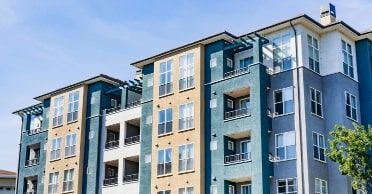Investigating Ways Different Building Elements Influence Wireless Signal Strength in Multi-Unit Units
Wiki Article
Wi-Fi has become an essential part of our daily lives, especially in multi-unit units such as condominiums and flats. These environments often have a range of construction materials that can affect the strength and quality of wireless signals. When planning a network for these settings, it is crucial to understand how different materials interact with radio signals. This insight can help guarantee that occupants receive strong, dependable internet access throughout their residences.

One of the main materials found in many multi-dwelling units is concrete. Concrete walls are known for their density, which can significantly impede Wi-Fi signals. The solid structure of cement absorbs and reflects radio waves, making it challenging for signals to pass through. As a result, areas located further away from the router may encounter weaker internet connectivity. Therefore, when planning a Wi-Fi network in a building with concrete walls, it may be necessary to use additional access points or signal boosters to ensure good coverage.
Another common material is metal, which can also interfere with Wi-Fi signals. Steel objects, such as pipes and steel framing, can create barriers that reflect or inhibit signals completely. This mirroring effect leads to dead spots where the Wi-Fi signal is low or missing. In multi-dwelling units, a builder’s decision to use steel can challenge the placement of routers and other communication equipment. To address this issue, thoughtful consideration must be applied to router placement and the use of distributed networks that can offer more broad coverage across multiple floors and areas.
Timber is another material that impacts Wi-Fi signal strength but generally does recommended read so less dramatically than cement or metal. Timber-based walls and floors tend to enable signals to pass through more easily; however, other variables such as insulation and furniture can still obstruct signal strength. In a multi-dwelling unit made primarily of timber, tenants might find good coverage in most areas but could encounter issues if there are many impediments in the way. Identifying potential barriers in the layout of an unit can help maximize Wi-Fi efficiency.
In addition to understanding how materials influence signals, it is essential to consider the layout of a multi-dwelling unit. The placement of routers should be strategic to the layout whenever possible, allowing for optimal signal distribution. Sometimes, physical structures like corridors and staircases can further reduce signal strength. Residents may also gain from using Wi-Fi repeaters or mesh systems that help preserve strong connections throughout larger spaces. Taking into account both building materials and use this link layout will significantly improve the overall Wi-Fi experience.
In conclusion, building materials play a key role in determining Wi-Fi signal strength in multi-dwelling units. Cement and metal are especially challenging due to their ability to obstruct wireless signals, while wood offers comparatively better performance but still presents some challenges. By understanding these considerations, builders and tenants alike can make educated decisions about network design and equipment placement. Ensuring reliable internet access is fundamental for modern living, and considering these elements will lead to a better-connected environment for everyone affected.